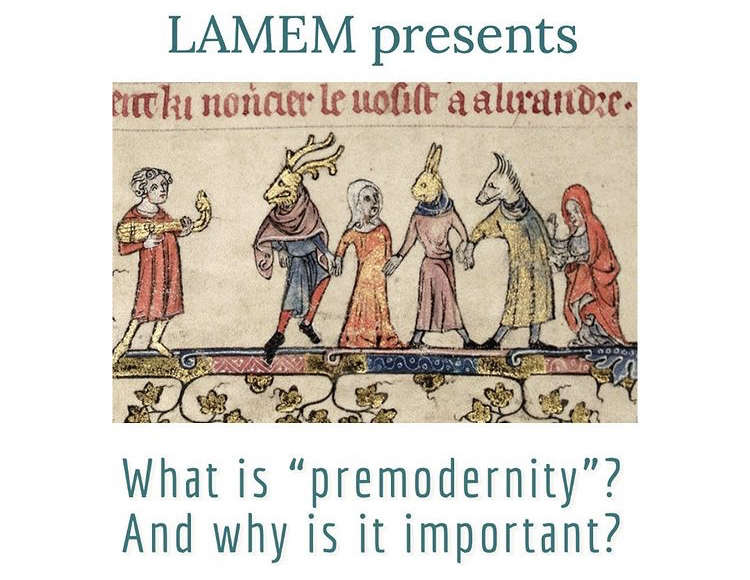

By Gabriela Flores
Life before 1500 CE, or what historians call “pre-modernity,” may not be the first thing about history that many today would study. But for 28 Brooklyn College faculty members, pre-modernity is a period that enables the present to connect with the past and see what changes happened over the centuries.
“If you move yourself far enough from either space or time, you’ll find things that surprise you. You’ll find things that are very different,” said BC History Professor Andrew Meyer in an event hosted by the Late Antique, Medieval, and Early Modern Working Group (LAMEM) last Friday, Sept.17. “And the assumptions you think are ironclad and unshakable all of a sudden become much more malleable.”
LAMEM started back in spring 2014 for BC pre-modernists to discuss their studies together. To kick off this fall semester, Professor Lauren Mancia from the Department of History led a panel of five BC professors to explain pre-modernity to outsiders of the interdisciplinary field and make the case on why anyone should delve nose-deep into the time’s history. But as most panelists clarified, it’s essential to “be a little loosey-goosey” with what years and aspects that divide the pre-modern from modern.
“Scholarship requires a division of labor. We have to find ways to divide things up. It’s not like these periods that we’ve labeled ‘the ancient medieval’ are not tracking something out there,” Andrew Arlig, a BC philosophy professor, said. He argued that having strict definitions for pre-modern and modern leads to “pernicious consequences” like placing renowned philosophers René Descartes and Mulla Sadra into separate historic periods despite being alive post-1500.
Descartes is often categorized under the early modern era’s Enlightenment period, whereas Islamic philosopher Sadra is typically considered part of the pre-modern. “If he [Sadra] appears at all, it’s either in an Islamic philosophy course or maybe he’s taught to be part of the medieval philosophy,” said Arlig.
He further noted that the medieval, or Middle Ages dating between the 5th to 15th century, is often reduced to “an age of ignorance.” Nonetheless, for the speakers, pre-modern texts, languages, cultures, and excavated remains reveal more than many initially assume.
“How these characters cross over to the modern era, to the modern centuries, is profound,” said Brian Sowers, a Classics Department professor. With one of his researches centering around the stories of ancient women, Sowers detailed how his interest and late ancient religion melded in the pre-modern. “The Acts of Paul and Thecla,” for instance, features a literary figure named Thecla who refuses to marry so she can voyage across the Mediterranean and spread Christianity overseas. Her decision to disobey her city’s government, despite their death threats, and remain unmarried is a sentiment that can be seen today, Sowers argued.
“The idea that religion, society, and governments could be controlling and oppressive, and the way that [an] individual negotiates that, and at times, find the courage to stand up for who they are, is something that is timeless,” Sowers opined.
As fragments of the pre-modern withheld the test of time and made its way to today, medievalists like English Professor Karl Steel have been able to zero in on how specific ideas developed, including how ancient humans reasoned and knew they were distinct from animals. To others, objects such as remaining silks enable them to see just how interconnected the pre-modern world was. Fragments of three similar silk, in particular, each depicting amazons on horseback slaying leopards with slight modifications, showed to Art Professor Jennifer Ball how ancient humans expressed their distinct cultures and religions through textiles.
“The textiles themselves have moved all around the medieval world,” she said, noting that materials used to create the silks were presumably sourced from China, India, modern-day Beirut, and other regions. “Textiles like these come into the contemporary world and have made all around the place again.”
Though analyzing the past is part of the role that each of the five BC pre-modernists assumes, finding a way to constantly explain why the world before 1500 CE is relevant today can be challenging. Always showing to publishers and students why the pre-modern is essential, as History Professor Steven Remy, who attended the event, raised, can draw away attention from the significant changes between the periods and the complex history itself. However, to the panelists, pre-modernity is worth being on people’s radars today, no matter if parallels could be drawn or not.
“I will go down fighting saying, ‘Yeah, if the past had no other application in the present, it would still be worth studying just because it’s so interesting,’” Professor Meyer said with a chuckle. “We’re not only about change, but we’re about change and continuity.”
